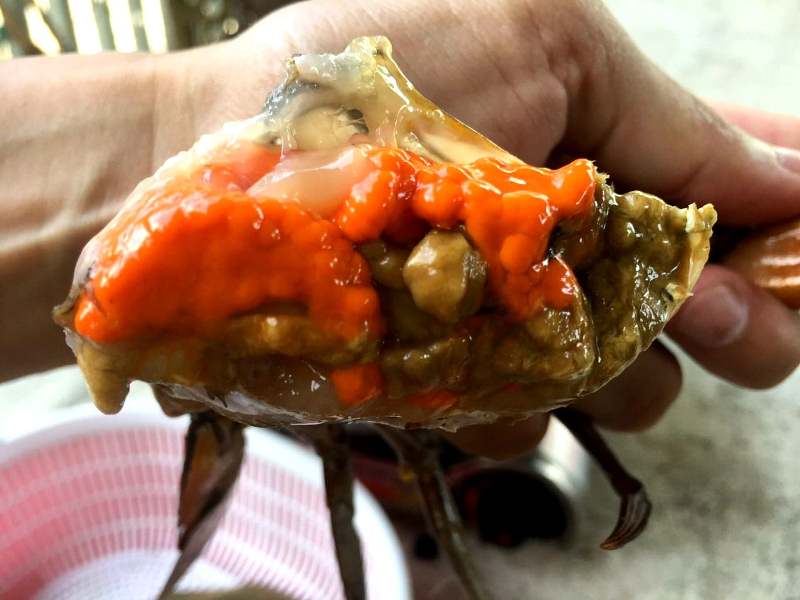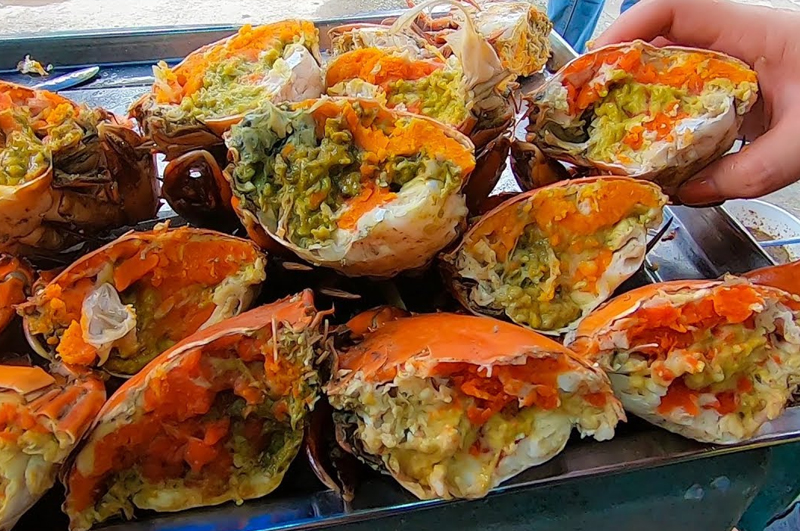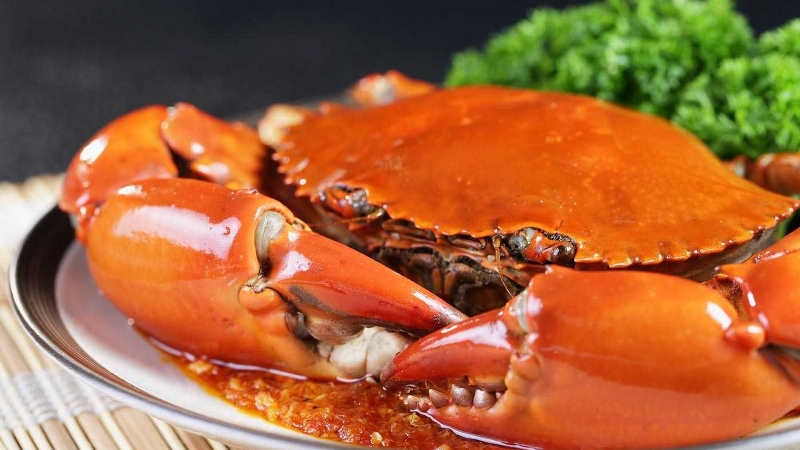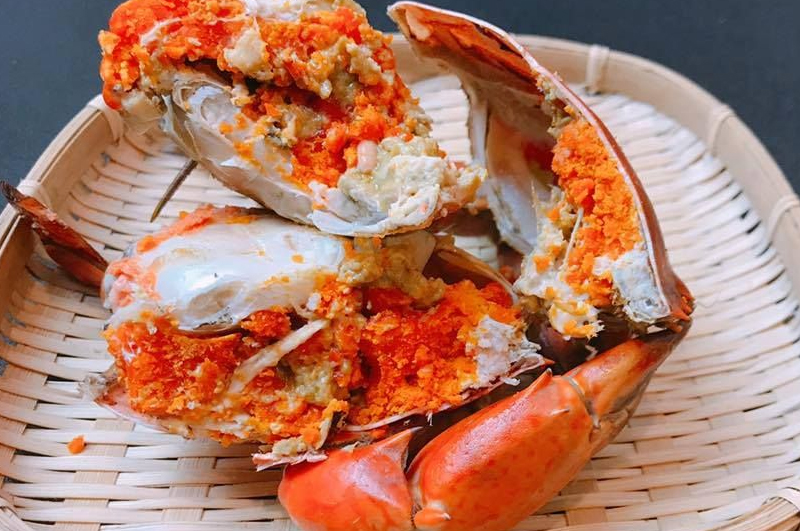For years, many people have believed that the yellow substance found in seafood crabs is roe. This belief is not entirely accurate, so what is this yellow substance? Read on to discover the truth behind this culinary mystery.
If you’ve ever eaten a crab, you may have noticed a yellow substance inside. Commonly known as “crab roe” or “crab fat,” it is considered a delicacy and believed to be highly nutritious. But is it really roe?
1 What is the “Yellow Substance” in Crabs?

When you open a crab shell, you will find a “yellow, sticky substance” that is commonly referred to as roe. However, according to scientists, this substance is actually the reproductive organ of the crab.
In male crabs, it is a system of sperm-producing cells, while in female crabs, it is the ovary. Typically, female crabs have more of this substance, and it can make up to two-thirds of their apron.
2 Is it Safe to Eat Crab Roe?

The answer is yes, and it is especially nutritious. Crab roe contains high levels of omega-3 fatty acids, which are known to prevent heart disease and depression. It is also a rich source of protein, which helps in cell regeneration. Additionally, crab roe is believed to be a powerful aphrodisiac for men, aiding in sperm production and virility.
Although it contains cholesterol, it is in a very low and healthy amount. When consumed in moderation, crab roe is even considered beneficial for patients with high blood pressure or other cardiovascular issues.
3 Are There Any Health Risks Associated with Eating Too Much Crab?

Despite its nutritional benefits, consuming excessive amounts of crab roe can be harmful. The US Department of Health has classified crab roe as unsafe for human consumption due to the presence of cadmium and polychlorinated biphenyls (PCBs).
Crabs are also one of the most common causes of seafood allergies, so it is important to be cautious when consuming large quantities. If you have a history of allergies, it is best to avoid crabs altogether to prevent any health risks.
Additionally, crabs contain high levels of sodium, so individuals with conditions such as diabetes, gout, liver disease, or kidney disease should refrain from overeating crabs.
4 How Should Crabs be Consumed for Optimal Health?

It is recommended to limit your crab consumption to one or two crabs per meal, as advised by the Center for Food Safety (CFS).
It is best to avoid eating hairy crabs as they tend to contain high levels of dioxins. Other crab varieties are generally considered safe.
When purchasing crabs, ensure that you source them from reputable suppliers to guarantee that they are caught in an unpolluted environment.
5 How to Choose Crabs with More Roe?

Select female crabs with larger aprons that occupy most of the crab’s body. The color of the apron should be darker than other crabs, and the fuller and tighter the apron, the more roe it contains, as it houses the crab’s ovaries.
When pressing on the crab’s shell, it should feel firm and difficult to indent. Soft shells indicate that the crab is of poor quality and will not taste good in terms of both meat and roe.
Gently press the area between the crab’s shell and apron. If the crab has a lot of roe, you will see a significant amount of red roe inside. If you don’t see any roe, it’s best to choose another crab.
Opt for live crabs with all their legs and claws intact. Missing limbs indicate that the crab may have been of poor quality, affecting both the meat and roe.
Some important things to keep in mind when eating crabs:
- Avoid overeating crabs.
- Thoroughly clean and prepare the crabs before cooking to ensure that the shell, legs, and claws are free from dirt and debris.
- Choose fresh, live crabs and ensure they are thoroughly cooked before consumption.
- Refrain from drinking tea or eating hawthorn fruits after eating crabs, as they can cause nausea, stomach pain, and diarrhea due to fermentation and coagulation in the intestines.
- Crab roe has a cold property according to traditional medicine, so it should be avoided by individuals with diarrhea or stomachaches.
Now you know the truth about crab roe. While it is a nutrient-rich part of the crab, it is important to consume it in moderation and with caution to ensure your health and well-being.




































